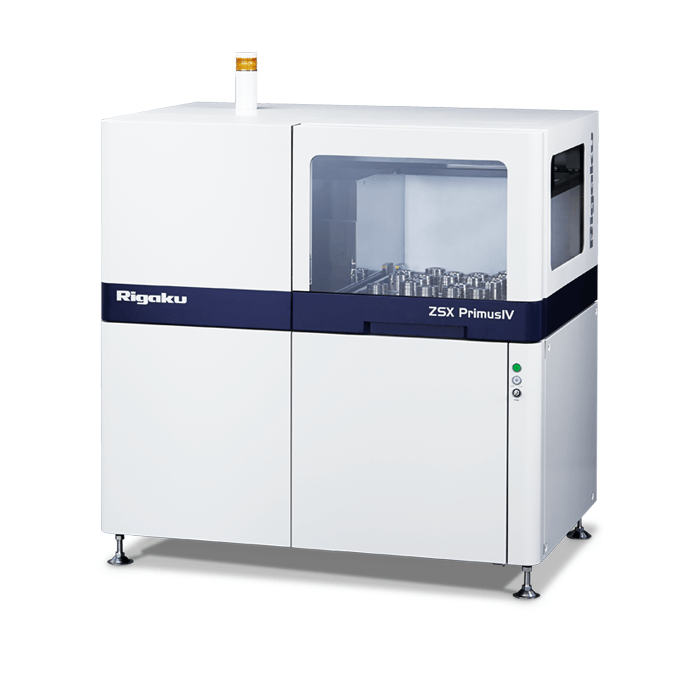Rigaku Corporation is pleased to announce the introduction of the new Rigaku ZSX Primus IV tube-above sequential wavelength dispersive X- ray fluorescence spectrometer (WDXRF). The new instrument offers significantly improved functionality and performance, including the new “ZSX Guidance” software and error prevention functionality, enabling novice users to obtain precise analysis results.
WDXRF analyzers are known for high detection sensitivity and spectral resolution offering non-destructive trace element analysis and are often employed by research institutions and for quality control. The ZSX Primus IV spectrometer maintains a tube-above configuration. Due to the tube-above optics, powder sample spills do not adversely affect the optical system. Since no protective film is required, intensity reduction due to film is avoided.
The system also includes a number of enhancements. A key new advantage is the ZSX Guidance software, now standard for the equipment. The software includes a quantitative application auto-configuration feature which automatically sets measurement conditions and various correction conditions once the user simply enters the standard value and sample information. An error prevention function, which can set an access level for each operator was also added.
The ZSX Primus IV system includes a dedicated analyzing crystal, resulting in a 30% improvement over conventional configurations – Significant, as measurement of boron is an important consideration in the manufacture of glass and ceramic materials, Light element sensitivity is also boosted by the system’s APC (Auto Pressure Control), which regulates and stabilized the vacuum conditions.
During analysis, regions of interest can be located in enlarged images of the sample taken with a high-resolution camera. The r-θ sample stage can accurately be positioned to facilitate measurements with uniform sensitivity on these small areas.
Key Features
- Tube above optics – Contamination risk is minimized as sample spills to not affect the optical system. Intensity reduction is avoided since no protective film is required.
- ZSX Guidance software – Built-in XRF expertise handles sophisticated settings. Available application packages enable quick startup.
- High-speed analysis – Throughput has greatly been improved by high-speed sample transportation, goniometer drive, data processing and effective driving control. Measurement time has been reduced by 40 % for qualitative analysis and 20 % for quantitative analysis.
- Digital Multi-channel Analyzer (D-MCA) – D-MCA X-ray counting system delivers improved precision with higher counting linearity.
- Point and mapping analysis – Regions of interest can be located in enlarged images of the sample taken with a high-resolution Camera.. The r-θ sample stage can then be positioned accurately to make measurements with uniform sensitivity on these small areas.
- Gas-sealed proportional counter (S-PC LE) for light elements – alternative to gas flow proportional counter (F-PC) is optional for sites where P-10 gas is not available

